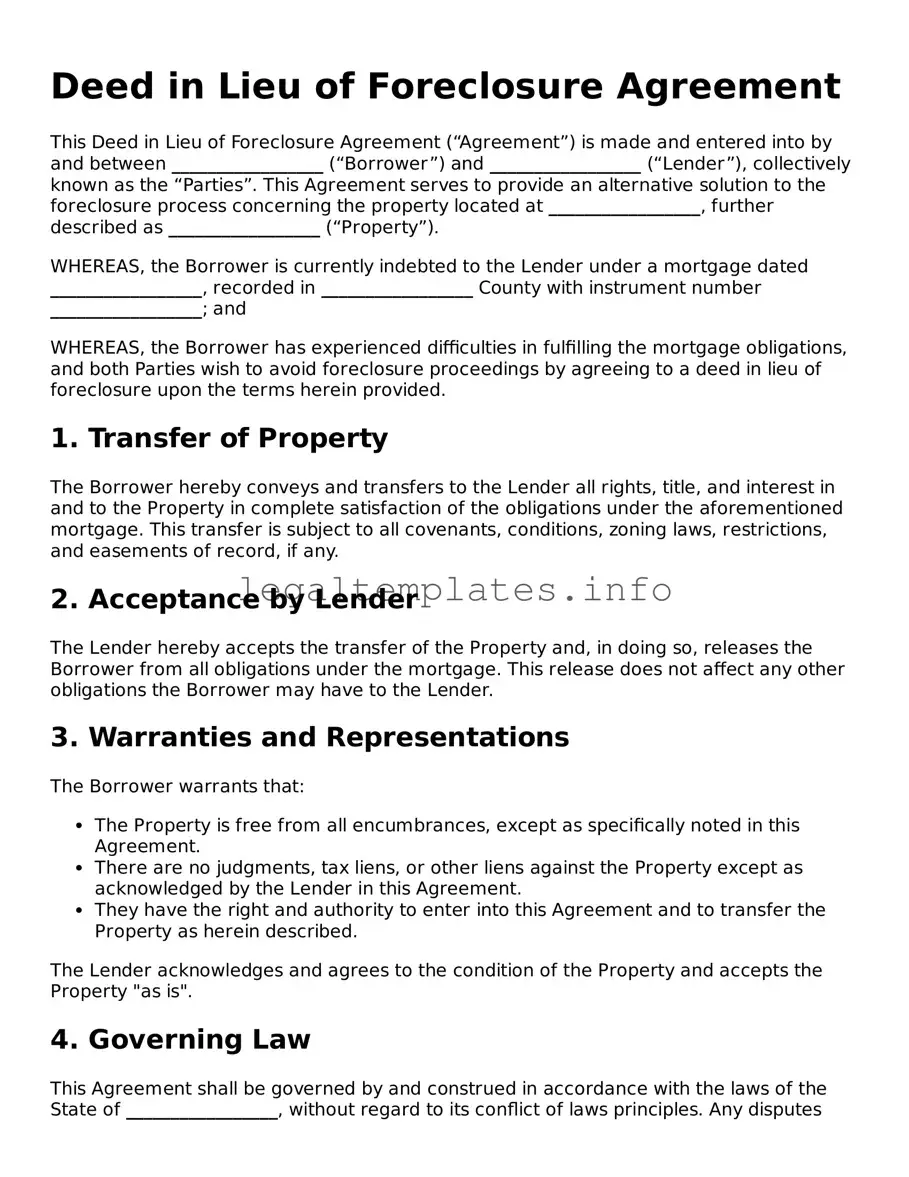What is a Deed in Lieu of Foreclosure?
A Deed in Lieu of Foreclosure is a legal document by which a homeowner voluntarily transfers ownership of their property to the lender or bank that holds the mortgage. This is used as an alternative to foreclosure, a legal process in which the lender would otherwise forcefully reclaim ownership of the property due to failure to make payments.
When should one consider a Deed in Lieu of Foreclosure?
One should consider this option when facing financial difficulties that make it impossible to keep up with mortgage payments, and all other options to avoid foreclosure have been exhausted or are not feasible. It can be a way to avoid the negative impact of a foreclosure on one’s credit report.
What are the benefits of choosing a Deed in Lieu of Foreclosure?
The benefits include avoiding the public notoriety and lengthy process of foreclosure, potentially less damage to one's credit score compared to a foreclosure, and sometimes the lender may agree to forgive any deficiency balance – the difference between the sale amount and the total debt owed.
Are there any disadvantages to a Deed in Lieu of Foreclosure?
Yes, there are disadvantages including the potential for tax implications on the forgiven debt, the loss of the property, and it may not always be easy to negotiate with the lender. Also, it still negatively impacts credit ratings, albeit typically less severely than a foreclosure would.
How does one initiate a Deed in Lieu of Foreclosure?
The process begins by contacting the lender to discuss the possibility. If the lender is open to it, the homeowner will then need to provide documentation requested by the lender, which often includes a financial statement, hardship letter, and proof of income and expenses. Once everything is submitted, the lender evaluates the request before making a decision.
What happens after a Deed in Lieu of Foreclosure is completed?
Once the deed in lieu is completed, the homeowner relinquishes all rights to the property, and the lender releases them from their mortgage obligations. The exact details can vary, including whether the lender pursues a deficiency judgment for any remaining debt, depending on the terms agreed upon.
Can a lender refuse a Deed in Lieu of Foreclosure?
Yes, a lender can refuse a deed in lieu of foreclosure. Acceptance is at the lender's discretion and may depend on the homeowner’s financial situation, the condition and value of the property, and whether there are any other liens against the property.
Is it necessary to have a lawyer when pursuing a Deed in Lieu of Foreclosure?
While it is not legally required to have a lawyer, it is highly recommended. A lawyer can provide valuable advice, ensure that the documents are correctly prepared and filed, and negotiate with the lender on the homeowner's behalf.
How does a Deed in Lieu of Foreclosure affect one's taxes?
When a lender forgives any part of a homeowner's debt through a deed in lieu of foreclosure, the IRS may consider the forgiven debt as taxable income. However, there may be exceptions or exclusions, so it's advised to consult with a tax professional.
Can anyone qualify for a Deed in Lieu of Foreclosure?
No, not everyone qualifies for a deed in lieu of foreclosure. Qualification criteria include the homeowner's financial inability to continue making payments, lack of other liens on the property, and sometimes the home’s market value being less than the owed mortgage amount. Each lender may have additional requirements.
